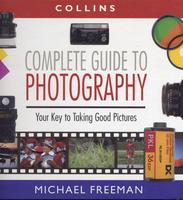Michael Stepanoff has sent me the link to an annoucement about a few books. There are a few books in English and in Russian about programming with Open Source Software. Things like GNU toolchain, PHP, and Linux are covered.
Category: Books
Blogs of writers, editors, and other publishing professionals
archer904 maintains this list of LiveJournal blogs and feeds of writers, editors, and other publishing professionals. These people blog about their daily stuff – writing, editing, verifying, proofreading and publishing. One can read excerpts from yet unpublished works and get hints on how to improve own writing.
WikiBooks
WikiBooks is yet another excellent resource that was spawned by an amazing Wiki technology. The goal of the project is development of free and open textbooks. You’ll find few thousand textbooks arranged into several bookshelves, which are similar to categories. Both the interface and the textbooks are available in several languages.
What You’ll Wish You’d Known
Paul Graham has written yet another essey – “What You’ll Wish You’d Known“. This one was originally a speech he prepared for a high school. For some reason, that speech was cancelled, so he just put it up online. I found it very interesting although I am somewhat older than average high school student. Read it, maybe you’ll interest you too.
Complete Guide to Photography by Michael Freeman
 I have just finished reading “Complete Guide to Photography” book by Michael Freeman. It is the best book on photography from those 10 or so that I have seen so far. It is aimed at beginner, but it doesn’t bore too much with the usual things like what is aperture and “Rule of Thirds” that everyone can read on the web (although these topics are covered). Instead, it takes the reader much further. It explains all sorts of aspects of photography and tells how to make good pictures. It talks a lot about lines, shapes and colours. It explains how to find and frame images in the most clear way.
I have just finished reading “Complete Guide to Photography” book by Michael Freeman. It is the best book on photography from those 10 or so that I have seen so far. It is aimed at beginner, but it doesn’t bore too much with the usual things like what is aperture and “Rule of Thirds” that everyone can read on the web (although these topics are covered). Instead, it takes the reader much further. It explains all sorts of aspects of photography and tells how to make good pictures. It talks a lot about lines, shapes and colours. It explains how to find and frame images in the most clear way.
The book is generic – it does not focus on the either film or digital photography. It talks about photography in general, prodiving examples for both worlds. The language is very clear. The terminology is kept to the minimum. Sentences are short. Parts of the book are broken into chapters, which are, in turn, broken into sections. Sections are very small units – few sentences or paragraphs long. Very easy to consume. There are plenty of pictures to illustrate the text.
Something I found surprising about this book. Although sentences were short and sections small, the book was so informative and thought provoking that I had to stop reading a lot of times just to consume what I’ve just read. While reading it I had always the urge to go back and reread sections, because I had a feeling that I left something important out. Immidiately after I have finished reading the book, I wanted to start all over again. And I will. Just not right now.
Another helpful side of the book are projects. Alsmost every chapter contains a project that you can do on your own to see and compare what you get with what is promised by the book. Some projects are interesting even without academia on the background.
This book is worth a buy. It will easily become a most used book of a photography beginner like myself. Unfortunately though I couldn’t find this particular book anywhere in the web shops. The copy I have is from a friend, who borrowed it from the library. I even head to scan the cover of it, although it didn’t fit into the scanner completely. On the web, I see only “The Complete Guide to Digital Photography” by Michael Freeman, which probably a newer and revised edition.